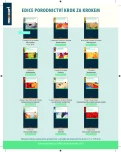Ritgen maneuver and its modifications
Authors:
Z. Rušavý; J. Karbanová; B. Bednářová; V. Kališ
Authors‘ workplace:
Gynekologicko-porodnická klinika LF UK a FN, Plzeň, přednosta doc. MUDr. Z. Novotný, CSc.
Published in:
Ceska Gynekol 2014; 79(1): 64-67
Overview
Objective:
To present the Ritgen maneuver, its original description as well as its most common modifications and to demonstrate the heterogenity of descriptions of the maneuver regarding its performance, purpose and published results.
Design:
A review article.
Setting:
Department of Gynecology and Obstetrics, Medical Faculty and University Hospital Pilsen, Charles University in Prague.
Methods:
A review article demonstrating the heterogeneity of Ritgen maneuver descriptions based on analysis of present and past obstetrical textbooks and journal articles.
Conclusion:
At present there is a pursuit of finding and analysis of methods for obstetric perineal injury prevention, which could considerably improve quality of life of women after delivery. One of the possible mechanisms of perineal trauma reduction is to ensure that the fetal head passes with its smallest head circumference through the perineal structures. Already in the middle of the 19th century, von Ritgen devised a method allowing to facilitate and control the extension of the fetal head in the end of the second stage of labor. His method quickly spread all over the world, however, the description changed considerably. The Ritgen maneuver today means a variety often very different interventions. This review points out to the need of clarification of terminology, i.e. definition and classification of methods facilitating extension of the fetal head in the end of the second stage of labor.
Keywords:
Ritgen maneuver – vaginal delivery – perineal trauma – prevention
Sources
1. Albers, L., Garcia, J., Renfrew, M., et al. Distribution of genital tract trauma in childbirth and related postnatal pain. Birth, 1999, 26, 1, p. 11–17.
2. Carroli, G., Mignini, L. Episiotomy for vaginal birth. Cochrane Database Syst Rev, 2009, 1 CD000081.
3. Cunningham, FG., Leveno, KJ., Bloom, SL., et al. eds. Williams obstetrics, 23rd ed. New York: McGraw-Hill Companies, Inc. 2009, p. 395.
4. DeCherney, AH., Nathan, L., Goodwin, TM., Laufer N. Current obstetric & gynecologic diagnosis & treatment. New York: Lange Medical Books/McGraw-Hill, 2003.
5. Dewees, WB. Relaxation and management of the perineum during parturition. J Am Med Assoc, 1889, XIII, 24, p. 841–848.
6. Dlhoš, E. Gynekológia a pôrodníctvo. Martin: Osveta, 1972.
7. Evans, AT. Manual of obstetrics. Wolters Kluwer Health, 2007.
8. Gabbe, SG., Niebyl, JRV., Simpson, JL. Obstetrics: normal & problem pregnancies. Philadelphia: Churchill Livingstone, Inc. 2002.
9. Gibbs, RS., Karlan, BY., Haney, AF., Nygaard, IE. Danforth‘s obstetrics and gynaecology, 10th ed. Philadelphia: Lippincott Williams & Wilkins, 2008.
10. Jönsson, ER., Elfaghi, I., Rydhström, H., Herbst, A. Modified Ritgen‘s maneuver for anal sphincter injury at delivery: a randomized controlled trial. Obstet Gynecol, 2008, 112, p. 212–217.
11. Kirkpatrick, JR. The management of the perinæum during delivery. Transactions of the Royal Academy of Medicine in Ireland, 1888, 6, 1, p. 269–282.
12. Laine, K., Pirhonen, T., Rolland, R., Pirhonen, J. Decreasing the incidence of anal sphincter tears during delivery. Obstet Gynecol, 2008, 111, 5, p. 1053–1057.
13. McCandlish, R., Bowler, U., van Asten, H., et al. A randomised controlled trial of care of the perineum during second stage of normal labour. Br J Obstet Gynaecol, 1998, 105, 12 p. 1262–1272.
14. Myrfield, K., Brook, C., Creedy, D. Reducing perineal trauma: implications of flexion and extension of the fetal head during birth. Midwifery, 1997, 13, 4, p. 197–201.
15. Pirhonen, JP., Grenman, SE., Haadem, K., et al. Frequency of anal sphincter rupture at delivery in Sweden and Finland – result of difference in manual help to the baby‘s head. Acta Obstet Gynecol Scand. 1998, 77, 10, p. 974–977.
16. Radestad, I., Olsson, A., Nissen, E., Rubertsson, C. Tears in the vagina, perineum, sphincter ani, and rectum and first sexual intercourse after childbirth: a nationwide follow-up. Birth, 2008, 35, 2, p. 98–106.
17. Ratcliffe, SD. Family medicine obstetrics. Philadelphia: Elsevier Health Sciences, 2008.
18. Ritgen, V. Ueber sein Dammschutzverfahren. Monatschrift für Geburtskunde u. Frauenkrankheit, 1855, 6, p. 321–347.
19. Smith, LA., Price, N., Simonite V., Burns, EE. Incidence of and risk factors for perineal trauma: a prospective observational study. BMC Pregnancy Childbirth, 2013, 13, p. 59. doi:10.1186/1471-2393-13-59.
20. Soiva, K. Synnytysopin oppikirja kätilöille. Porvoo: WSOY, 1984.
21. Thom, DH., Rortveit, G. Prevalence of postpartum urinary incontinence: a systematic review. Acta Obstet Gynecol Scand, 2010, 89, 12, p. 1511–1522.
22. Trapl, J. Učebnice praktického porodnictví pro studující mediciny a lékaře. Praha: Zdravotnické nakladatelství, 1949.
23. Turrentine, JE., Aviles, M., Novak, J. Clinical protocols in obstetrics and gynecology. Parthenon Publishing Group, 2003.
24. Varney, H., Kriebs, JM, Gegor, CL. Varney‘s midwifery. Jones & Bartlett Learning, 2004.
25. Williams, JW. Obstetrics – a text-book for use of students and practitioners. New York: D. Appleton and Co., 1903.
26. Zemcik, R., Karbanova, J., Kalis, V., et al. Stereo-photogrammetry of the perineum during vaginal delivery. Int J Gynaecol Obstet, 2012, 119, 1, p. 76–80.
27. Zwinger, A., et al. Porodnictví, 1. ed. Praha: Karolinum, 2004.
Labels
Paediatric gynaecology Gynaecology and obstetrics Reproduction medicineArticle was published in
Czech Gynaecology

2014 Issue 1
Most read in this issue
- Non-neoplastic epithelial disorders of the vulva – lichen sclerosus
- Androgen insensitivity syndrome – case report
- Severe postoperative bleeding after Total Prolift procedure for vaginal vault prolapse – case study
- Comparison of hysterectomy techniques in a group of patient operated for the diagnosis female to male transsexualism
